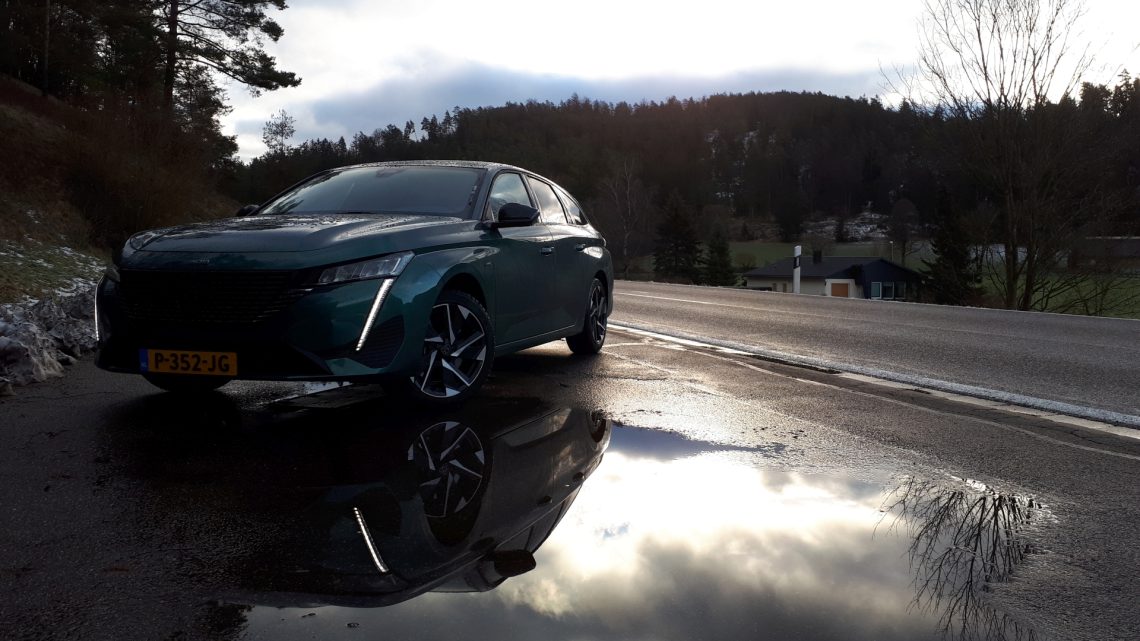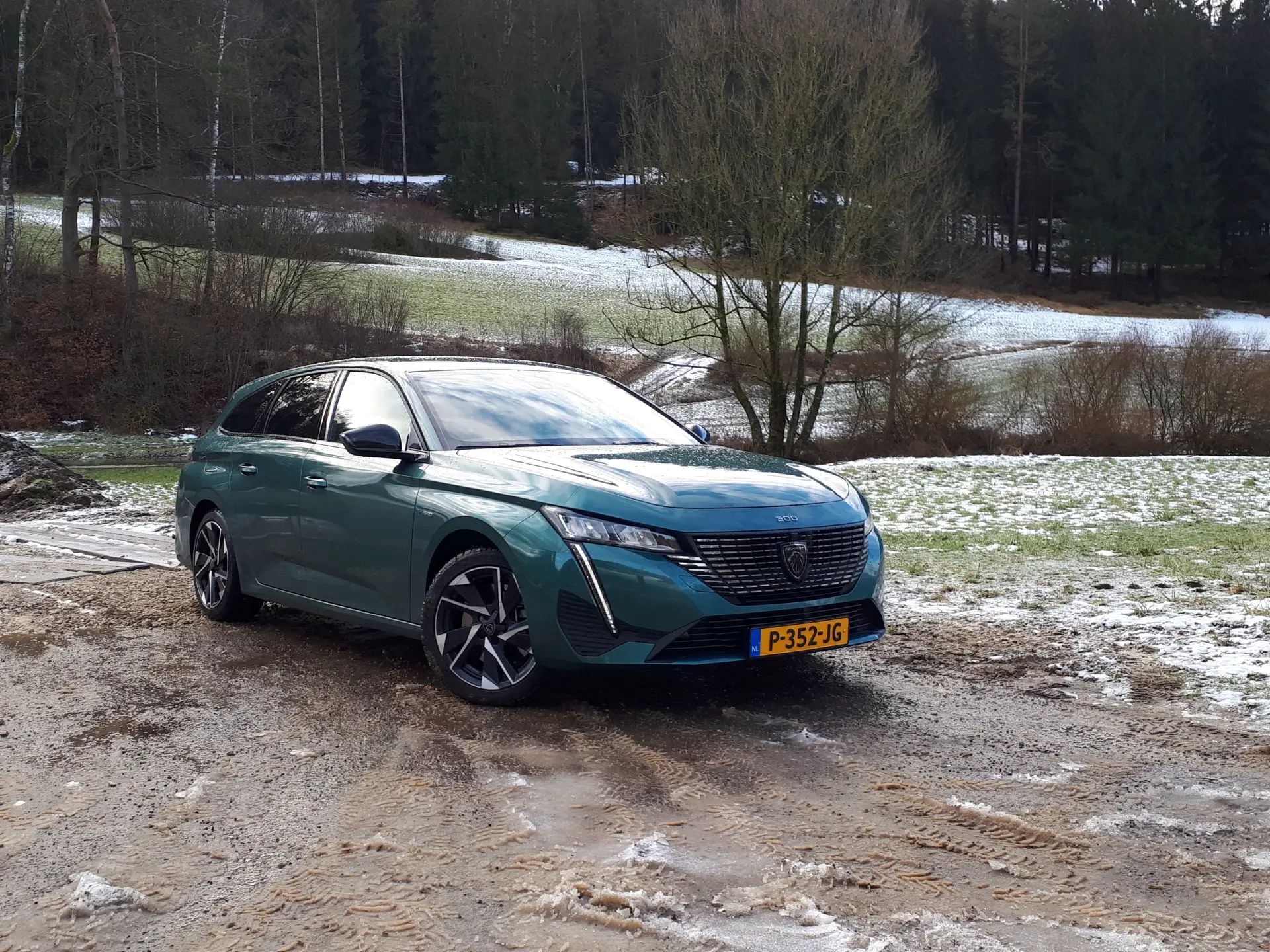Review – Travelling with plug-in hybrid Peugeot 308 SW
As long as you charge them obediently, a plug-in hybrid can cover a lot of miles fully electric. A little plug-in hybrid has an all-electric range (in practice) of about 30 to 50 kilometers, so on average daily trips, in theory, you rarely need to refuel. What about when you go on a longer trip? So does plug-in hybrid technology offer any benefits? We find out with a Peugeot 308 SW HYbrid 180.

Engines Peugeot 308
The Peugeot 308 is currently available with three engine variants. The price list begins with the PureTech 130, a 1.2-liter three-cylinder gasoline engine with, as its name suggests, an output of 96 kW (130 hp). This engine is mated to a six-speed manual transmission as standard. An eight-speed automatic transmission is optional. Drive always goes to the front wheels.
The other two powertrains are both plug-in hybrids: the HYbrid 180 and the HYbrid 225. Here the numbers again refer to the system outputs of 133 kW (180 hp) and 165 kW (225 hp), respectively. The basis of the plug-in hybrid powertrain is a 1.6-liter four-cylinder gasoline engine. This also accounts for the higher power output of the 225 variant; the electric motor always delivers 81 kW (110 hp). The HYbrid models always have an eight-speed automatic transmission and again front-wheel drive.
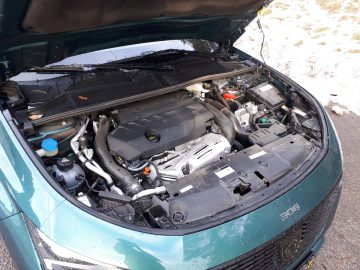
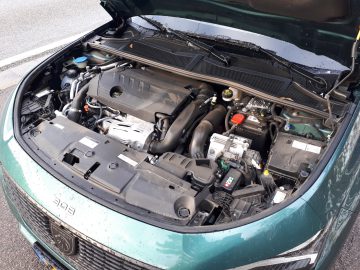
Practical features Peugeot 308 SW
With a Peugeot 308 SW Hybrid 180, we set out on a trip to Germany. It will be a ride of more than 700 kilometers, roughly from North Holland to Bavaria. Even as a plug-in hybrid, the Peugeot 308 SW is a practical car. While the luggage space is slightly smaller than the gasoline version (548 liters versus 608 liters), it is still plenty of room for our luggage. Other than that, we have great seating both in the front and in the back, so we keep the trip going well.
The only thing that we’re a little worried about is the charging cable. There is a recess under the cargo floor for this purpose. Keeping the charging cable under a full luggage compartment is not practical anyway, but it is also too much of a hassle for us to cram the cable into the cramped recess. In the end, we just stuffed the charging cable into the luggage compartment behind the left wheel well, as far as that goes.
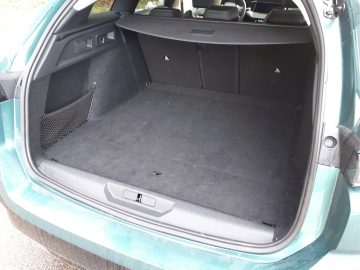
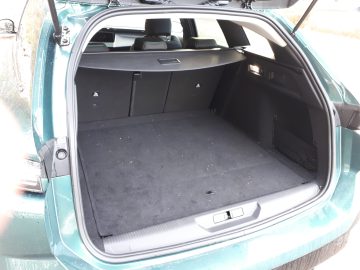
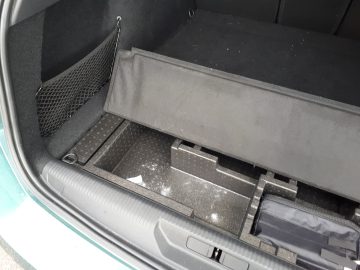
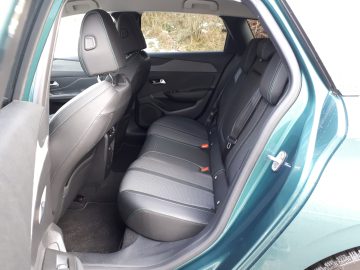
Equipment
The version we drove is an Allure Pack Business, the highest trim level except for the sporty GT. It goes without saying that “our” Peugeot leaves little to nothing to be desired. Especially pleasant on such a long journey are the navigation with real-time traffic information, the extensive infotainment functions and the adaptive cruise control with Stop & Go function. Also nice in outdoor temperatures around freezing: the heater comes up to temperature nice and fast.
Rear seat passengers in the Allure Pack Business have their own air conditioning/heating vents, an armrest with cup holders and their own USB connection. Peugeot does only install USB-C connectors in the car, so bring your own adapter if necessary. Practical in the 308 SW are the ski hatch in the backrest of the rear seat and the adjustable luggage compartment floor. The full range of equipment and the most current prices can be found at www.peugeot.nl.
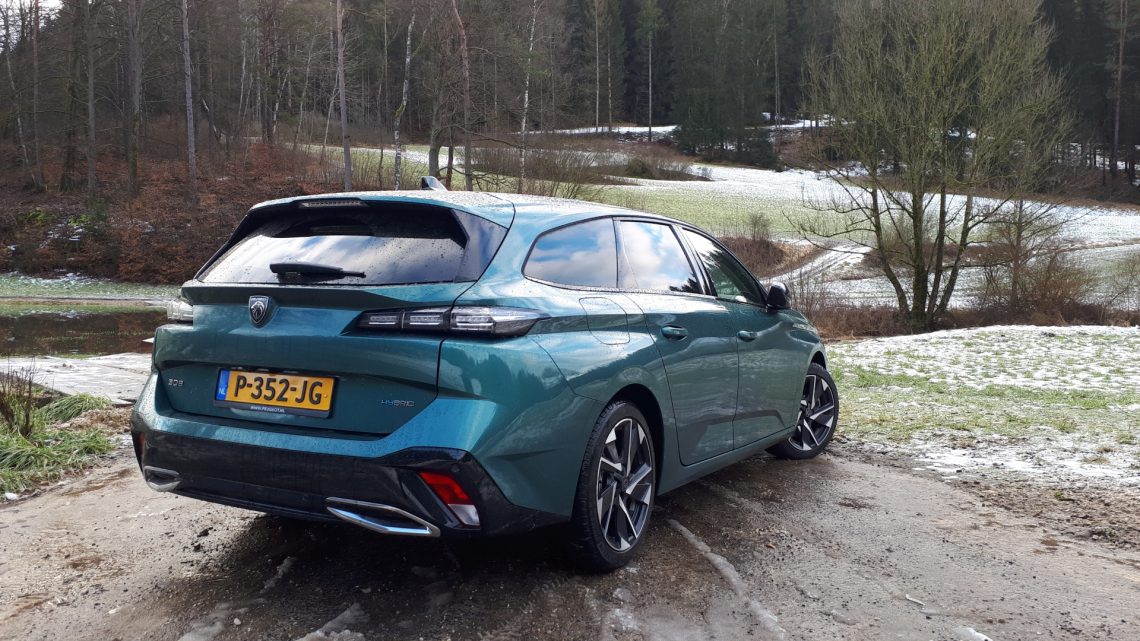
The Peugeot i-Cockpit
Also standard is the still unusual Peugeot i-Cockpit. In short, a relatively small steering wheel should make for a more pleasant driving experience and also allows you to look over the steering wheel at the counters. Those counters, in turn, are positioned higher than usual, eliminating the need for an expensive head-up display. In theory, an ideal setup.
In practice: be sure to test sit yourself to see if you like it and if the counters don’t just disappear behind the steering wheel rim in your ideal seating position. In any case, we like the highly placed counters very much. On the long highway stretches of our trip, a slightly larger “normal” steering wheel would have been nice, but on the twisty country roads in Bavaria, the small steering wheel and the rest of the Peugeot i-Cockpit come into their own again just right.
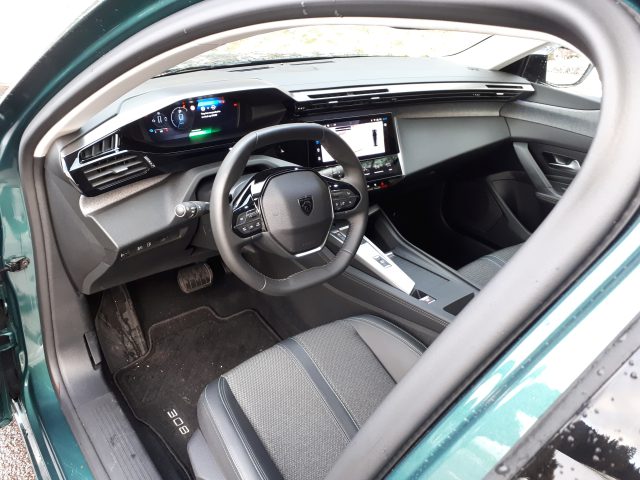

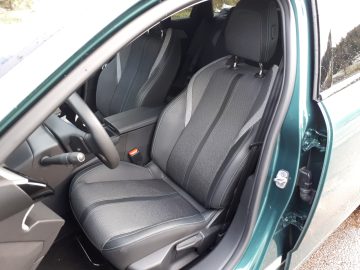
Driving characteristics Peugeot 308
Earlier in the Netherlands, we noted that the Peugeot 308 offers a good balance of tight but comfortable handling. It is no different on this trip. The highway miles fly by under us in comfort, and in the Bavarian hills, the Peugeot 308 even shows a bit of its sporty side. The 308 is great for steering on those curvy, rolling roads. With the Allure Pack Business driven, the standard comfort seats have been replaced by sports seats, but they actually offer a fine combination of seating comfort and good support. The only real criticism in terms of ride comfort is perhaps the tire noise, which is quite present somewhat depending on the type of asphalt.

Plug-in hybrid range Peugeot 308 SW
The Peugeot 308 SW HYbrid 180 has an official all-electric range (WLTP) of 60 kilometers. With fully charged battery we leave at the importer. Despite driving on the highway, we come remarkably close to this theoretical value. At a fairly constant speed of 100 km/h, we still drive about 50 km fully electric.
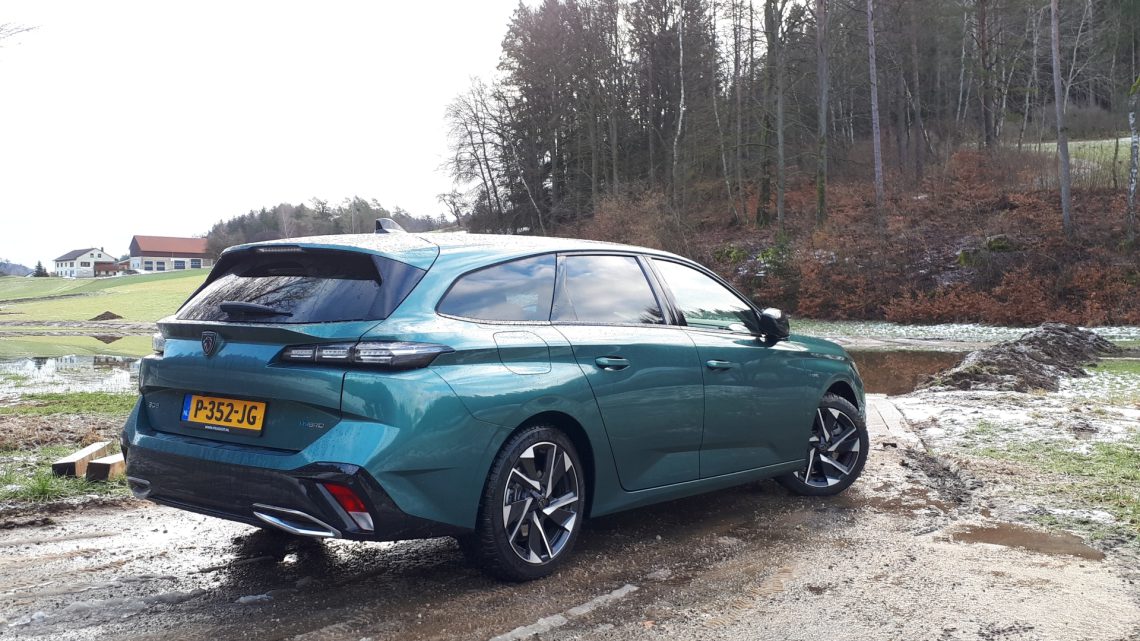
The Peugeot 308 SW HYbrid 180 as a ‘regular’ hybrid
So much for the electric party, as the public charging station close to home appears to have malfunctioned. The closest alternative is a lot further down the block; that won’t be him either. Fully charging before departure is therefore out of the question, we will have to drive the Peugeot 308 SW HYbrid 180 like a “regular” hybrid. This turns out to be true the entire trip, as the village where we are staying in Germany has no charging stations at all. The other charging stations we encounter during our half-week in Germany are all occupied.
Still, hybrid technology offers advantages even with a depleted battery. Every time you decelerate, the regenerative braking system still provides a little extra power. Downhill, we can regularly get the Peugeot to regenerate heavily. It’s not enough to get even one percent battery charge on the meter, but it’s enough to get going or up the hill with electro-assistance afterward. Within urban areas, we still do drive small stretches fully electric after regeneration.
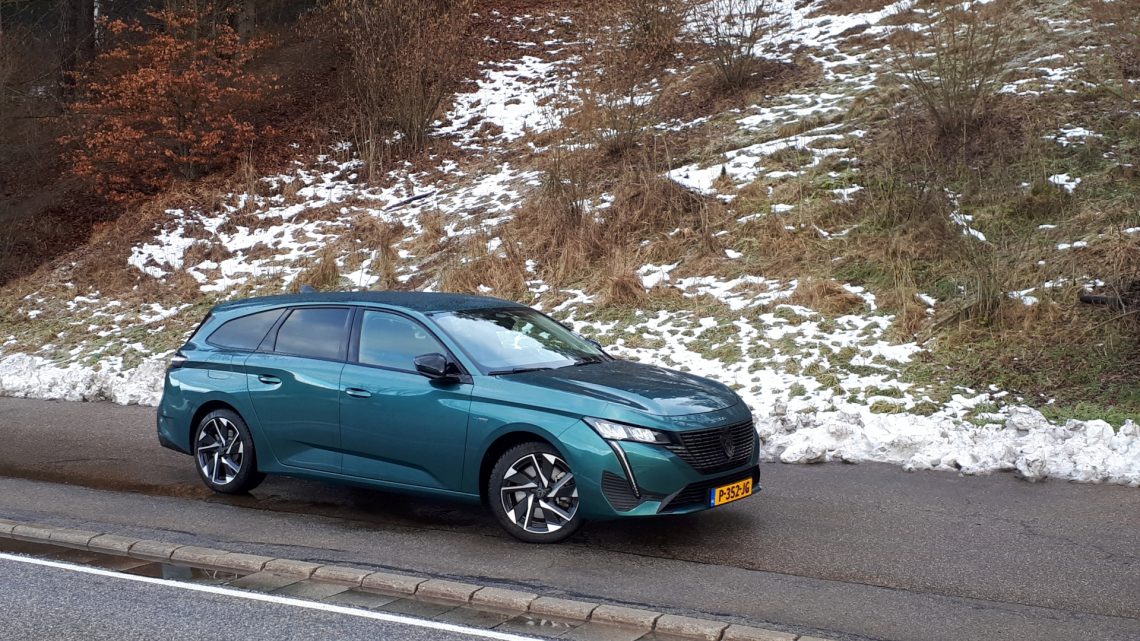
What we do notice is that the Peugeot 308 SW HYbrid drives just a bit smoother with a full battery (and thus with full electric assistance). On cold starts with a flat battery, the powertrain even reacts a bit petulantly to throttle commands for the first few meters. Once warmed up and with some regenerated energy in the battery, however, the hybrid powertrain does its job smoothly even with (almost) empty battery.
Practical consumption Peugeot 308 SW HYbrid 180
Well, really representative is not the practical consumption during our trip in the end. In the end, we were only able to recharge the car at home, after the trip. We had actually wanted to do that a few times during the trip. Despite the luggage on board and the fact that we kept a pace of around 140 km/h on the Autobahn whenever possible, practical consumption without charging is actually not too bad for us.
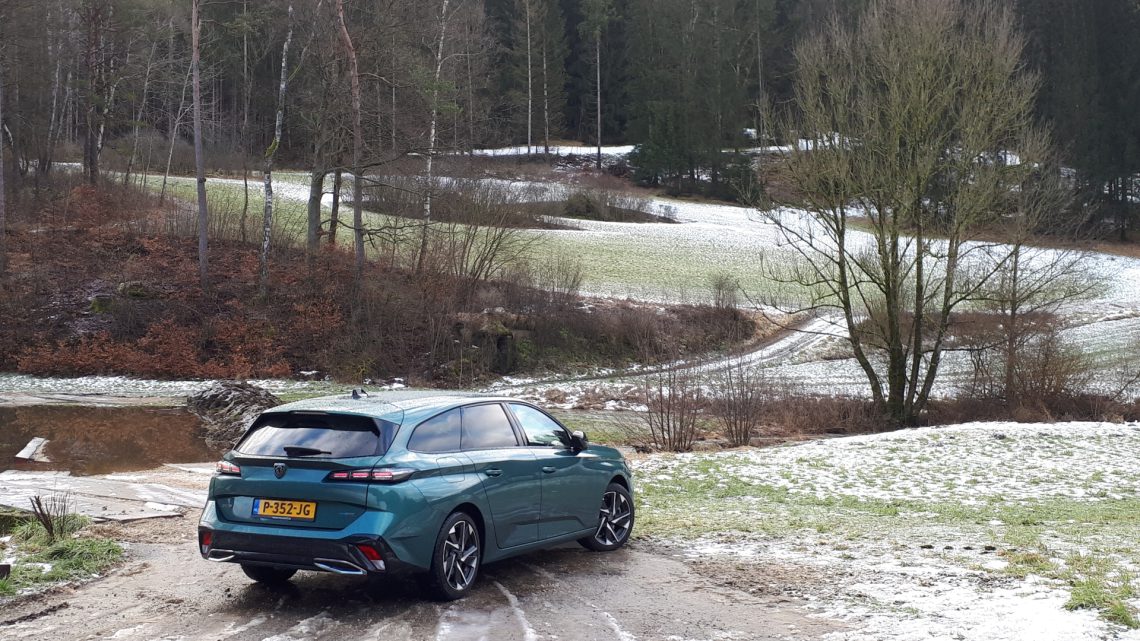
After the trip totaling some 2,000 kilometers (twice the highway trip of over 700, plus the local kilometers in Germany), we read on the trip computer a practical consumption of 6.2 l/100 km (1 on 16.1). For a hybrid, perhaps not very impressive, but it makes little difference compared to the gasoline version of the Peugeot 308 SW. That has an official WLTP average consumption of 5.8 l/100 km (1 on 17) in the most comparable version. However, that engine delivers “only” 96 kW (130 hp) and that does not yet take into account the heavier load during travel. Under the conditions of this trip, the gasoline version probably would not have been more economical than the consumption we were now achieving with the hybrid.
One practical note, however, is that the 40-liter tank of the HYbrid version is relatively small under these conditions. For average trips in the Netherlands – if you are charging – you are rarely at the pump. On a trip like this, it is time to refuel again sooner than expected. For comparison, the gasoline version of the Peugeot 308 SW has a 52-liter tank.

Conclusion
Even if, as in our case, you have nowhere to charge, a plug-in hybrid powertrain also offers advantages on a long trip. After regeneration, the electric motor continues to provide support as usual, and we even continued to drive small stretches fully electric. Besides, every little bit helps. Admittedly, without charging, fuel economy is not much lower than the gasoline version. If you travel behind to an area with (more) charging stations and use them, a plug-in hybrid offers almost as much benefit on a longer trip as it does on your daily miles at home.
